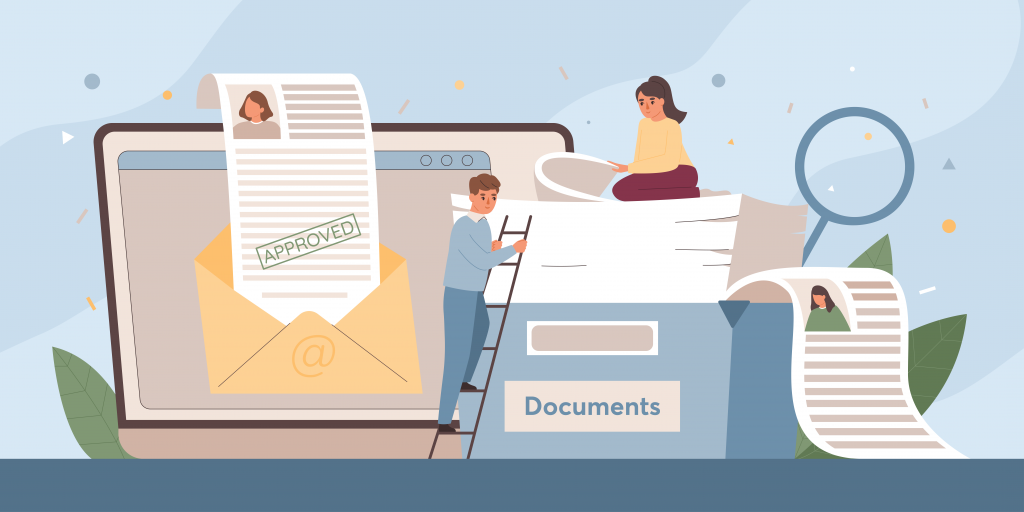
The Family and Medical Leave Act (FMLA) is an important law that provides employees with the opportunity to take unpaid leave for certain family and medical reasons while protecting their job security. As an employer, it is crucial to have a comprehensive understanding of the FMLA to ensure compliance and properly support your employees. This guide will walk you through the key components, eligibility requirements, types of leave covered, employee rights, employer responsibilities, managing FMLA leave and benefits, the application process, interaction with other employment laws, common challenges and misconceptions, and further resources.

The Family and Medical Leave Act (FMLA) is a federal law that provides eligible employees with job-protected leave for certain family and medical reasons. It is important for employers to be familiar with the critical components of the FMLA to ensure compliance and support their employees. Let’s take a closer look at these key components:

The Family and Medical Leave Act (FMLA) was enacted in 1993 to help balance the demands of work and family life for employees. It applies to private employers with 50 or more employees, public agencies, and educational institutions. The FMLA is a federal law that grants eligible employees the right to take unpaid leave for specific qualifying reasons.
One of the fundamental goals of the FMLA is to promote the stability and economic security of families. It recognizes that employees may need time off from work to address personal and family medical emergencies. By providing employees with the necessary support during these challenging times, the FMLA aims to alleviate the stress and financial burden that often accompany such situations.
Under the FMLA, eligible employees are entitled to take up to 12 workweeks of unpaid leave in a 12-month period. This leave can be used for various reasons, including:
It is important to note that the FMLA provides job protection to eligible employees who take leave under its provisions. This means that when an employee returns from FMLA leave, they are entitled to be reinstated to the same or an equivalent position with the same pay, benefits, and terms of employment.
Additionally, the FMLA requires employers to maintain the employee’s health benefits during the leave period. This ensures that employees and their families continue to have access to healthcare coverage while they are on leave.
While the FMLA provides important protections for employees, it is crucial for both employers and employees to understand their rights and responsibilities under the law. Employers must comply with the FMLA’s requirements, including providing employees with the necessary information about their rights and the procedures for requesting leave. Employees, on the other hand, must meet the eligibility criteria and follow the proper procedures for requesting and taking FMLA leave.

Not all employees are eligible for FMLA leave. To be eligible, an employee must have worked for the employer for at least 12 months, have worked at least 1,250 hours in the previous 12-month period, and be employed at a worksite with at least 50 employees within 75 miles.
It is essential to familiarize yourself with these eligibility requirements and ensure that you properly determine an employee’s eligibility before approving or denying FMLA leave.

The FMLA covers various types of leave, including:
Each type of leave has specific requirements and provisions that employers need to be aware of to ensure compliance.
The FMLA grants several rights and protections to eligible employees, including:
Understanding and respecting these rights and protections is crucial to maintaining a positive and supportive work environment.

As an employer, you have specific responsibilities under the FMLA, such as:
Understanding and fulfilling these responsibilities will help you create a compliant and supportive work culture.
Effectively managing FMLA leave and benefits is crucial for both employers and employees. It involves clear communication, coordination with healthcare providers, and accurate record-keeping.
Developing and implementing comprehensive policies and procedures for managing FMLA leave and benefits will help streamline the process and ensure compliance.
When an employee needs to take FMLA leave, they must follow a specific process. This involves providing notice to the employer, submitting the necessary documentation, and timely updates throughout the leave period.
As an employer, it is essential to establish a clear and efficient application process to ensure prompt review and approval of FMLA leave requests.

To initiate the family leave process, employers should provide a structured, straightforward procedure that employees can follow with ease. This should begin with an official application or notification form that individuals need to complete in order to signal their intent to take leave: a vital protocol ensuring all parties remain informed.
Upon receipt of a leave request, the employer is tasked with the crucial role of reviewing and responding within a mandated timeframe. Documentation related to the qualifying event, such as medical certifications or court documents, must be submitted by the employee to substantiate the necessity of their leave request.
| Step | Action Required | Responsibility | Timeframe |
| 1 | Submit Leave Application | Employee | As soon as practicable |
| 2 | Review Leave Request | Employer | Within 5 business days |
| 3 | Provide Required Documentation | Employee | Typically within 15 calendar days |
| 4 | Respond to Leave Request | Employer | After documentation review |

Critical to the FMLA compliance is the employer’s meticulous evaluation of the supporting documents submitted. These records affirm the legitimacy of the employee’s request for leave, whether arising from personal illness, the needs of a family member, or the arrival of a new child.
Upon receiving the employee’s initial notification of the need for FMLA leave, an employer responds with prompt requests for certification. The employer must then assess the sufficiency of the documentation to validate the FMLA claim:
The process compels detailed scrutiny to ensure the documents meet FMLA requirements without infringing on employee privacy. Timely verification serves as a gatekeeper to uphold both the employee’s rights and employer’s obligations under the Family and Medical Leave Act.
The FMLA interacts with several other employment laws, such as the Americans with Disabilities Act (ADA) and the Pregnancy Discrimination Act (PDA). It is crucial to understand how these laws intersect to ensure full compliance and protect employee rights.

When FMLA intersects with the Americans with Disabilities Act (ADA) and the Pregnancy Discrimination Act (PDA), HR professionals face unique challenges. For instance, an employee with a serious health condition may be entitled to additional accommodations under the ADA after exhausting FMLA leave. Similarly, pregnancy-related conditions might be covered under both FMLA and PDA, requiring careful navigation to ensure compliance with both sets of regulations.
FMLA and workers’ compensation laws can overlap when an employee’s work-related injury qualifies as a serious health condition under FMLA. In such cases, HR must understand how these leaves can run concurrently and manage the employee’s rights and benefits under both statutes, ensuring that the employee does not exceed the entitled leave duration.
Many states have enacted leave laws offering more extensive benefits than FMLA. HR professionals must be aware of these state-specific regulations, as they often provide additional protections or requirements. Navigating these alongside FMLA requires a detailed understanding of both federal and state law provisions to ensure full legal compliance and proper employee support.

The intersection of FMLA with the Fair Labor Standards Act (FLSA) primarily involves wage and hour considerations, especially for exempt (salaried) and non-exempt (hourly) employees. HR must ensure that FMLA leave does not improperly affect an employee’s exempt status and that non-exempt employees are correctly compensated, particularly when dealing with intermittent or reduced-schedule FMLA leave.
FMLA provides additional provisions for military families, such as qualifying exigency leave and military caregiver leave. These provisions cover various situations, including caring for a military member with a serious injury or illness or addressing certain exigencies related to military deployment. HR professionals must understand these specific provisions to adequately support employees with family members in the military, while also complying with the broader FMLA regulations.
The FMLA can present various challenges and misconceptions for employers. These may include difficulties in tracking intermittent leave, facing abuse of FMLA leave by employees, or misunderstandings regarding eligibility requirements.
Recognizing and addressing these challenges proactively will help mitigate potential issues and ensure a smooth implementation of the FMLA within your organization.

The Family and Medical Leave Act (FMLA) is a significant law that provides employees with essential rights and protections during specific family and medical situations. As an employer, understanding the key components, eligibility requirements, employee rights, and employer responsibilities under the FMLA is crucial for compliance and fostering a supportive work environment.
For more in-depth information and guidance, consult the official regulations, fact sheets, and guides provided by the United States Department of Labor (DOL) on the FMLA website. Additionally, seeking legal counsel or human resources professionals with expertise in the FMLA can provide valuable support in navigating its complexities.
Employees are eligible for FMLA leave if they have worked for the employer for at least 12 months, have at least 1,250 hours of service in the 12 months prior to the leave, and work at a location where the employer has 50 or more employees within 75 miles.
2. How does FMLA leave interact with other types of leave like sick leave or vacation?
FMLA leave is unpaid and can run concurrently with paid leave types like sick leave or vacation. Employers often require employees to use paid leave first, which then counts towards the 12-week FMLA entitlement.
3. What are the requirements for advance notice from employees for FMLA leave?
Employees should provide 30 days advance notice for foreseeable FMLA leave. If the leave is unforeseeable, employees must notify the employer as soon as practicable.
4. How should intermittent FMLA leave be tracked and managed?
Intermittent FMLA leave should be tracked carefully, with HR ensuring that the total time taken doesn’t exceed the 12-week entitlement. Employers can require certification for the need for intermittent leave.
5. What documentation can employers legally request to verify the need for FMLA leave?
Employers can request a medical certification from a healthcare provider to verify the need for FMLA leave due to a serious health condition.
6. Are there any specific rules for FMLA leave for childbirth, adoption, or foster care?
FMLA allows leave for the birth, adoption, or foster care placement of a child. This leave can be taken all at once or intermittently and must be used within one year of the child’s arrival.
7. How does FMLA leave apply to remote or part-time employees?
Remote and part-time employees are eligible for FMLA leave if they meet the standard eligibility criteria, including the minimum hours worked and being employed at a worksite with 50 or more employees within 75 miles.
8. What steps should be taken if an employee is suspected of abusing FMLA leave?
If FMLA abuse is suspected, employers can request recertification or a second opinion (at the employer’s expense). However, they must adhere to privacy and nondiscrimination laws.
9. How should an employer handle an employee’s return to work after FMLA leave?
Upon returning from FMLA leave, employees are entitled to their original or an equivalent position with the same pay, benefits, and terms of employment.
10. What are the common mistakes employers make regarding FMLA and how can they be avoided?
Common mistakes include failing to recognize a request for FMLA, not providing required notices, denying legitimate leave requests, and retaliating against employees for taking FMLA leave. To avoid these, employers should train HR staff and managers on FMLA rules and maintain open communication with employees.

Background:
John, a project manager at XYZ Corporation, has been diagnosed with a chronic heart condition requiring surgery and a significant recovery period. He has been employed with XYZ Corporation for two years and works full-time.
Situation:
John approaches HR to request FMLA leave for his upcoming surgery and recovery. He is unsure about the process and his rights under FMLA.
HR’s Response:
Outcome:
John successfully undergoes surgery and completes his recovery, returning to work after 10 weeks. The process is managed smoothly by HR, ensuring compliance with FMLA regulations and supporting both the employee and the organization.

Background:
Emily, a software developer at Tech Innovations Inc., is expecting her first child. She has been with the company for three years, working full-time.
Situation:
Emily intends to take FMLA leave following the birth of her child for bonding and childcare. She approaches HR to discuss her leave options and understand the process.
HR’s Response:
Outcome:
Emily takes 12 weeks of FMLA leave following the birth of her child. The leave process is efficiently managed by HR, balancing compliance with FMLA regulations and supporting Emily during this important life event.